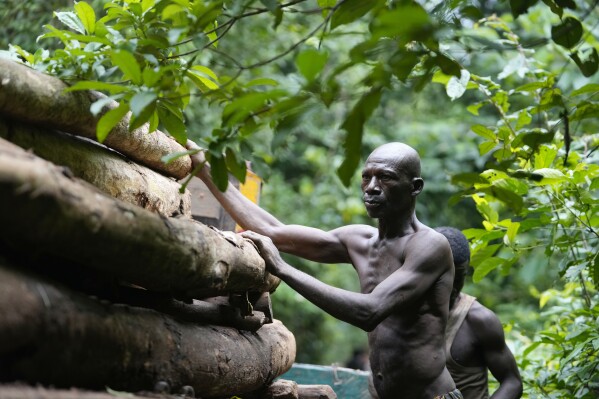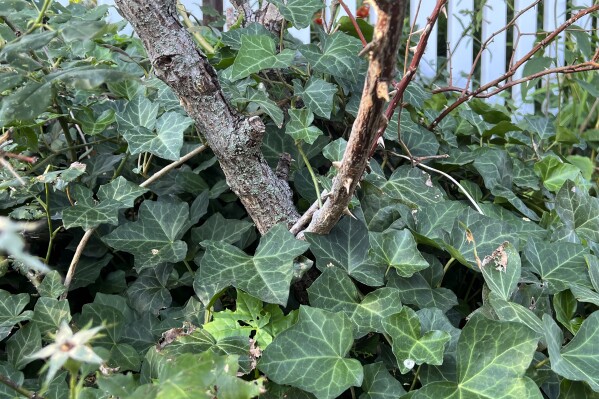16-year-old male arrested on suspicion of felling a landmark tree in England released on bail
LONDON (AP) — The 16-year-old male arrested for felling a 300-year-old sycamore tree near the Roman landmark of Hadrian’s Wall in the north of England has been released on bail, police said Friday.
The boy was arrested Thursday on suspicion of criminal damage, after the tree was felled overnight.
Why anyone would want to cut down one of England’s most iconic trees has left people across the U.K. baffled and angry.
Robert Macfarlane, a renowned nature writer, said he was “sick to the core” to hear the news about the tree, which was “known and loved by millions.”
 Logging is growing in a Nigerian forest home to endangered elephants. Rangers blame lax enforcement
Logging is growing in a Nigerian forest home to endangered elephants. Rangers blame lax enforcement
 Invasive and ubiquitous, English ivy can hurt trees and plants. Removing it isn’t easy
Invasive and ubiquitous, English ivy can hurt trees and plants. Removing it isn’t easy
 ‘Don’t chop me down.’ 100-year-old gingko trees may get axe for Tokyo redevelopment project
‘Don’t chop me down.’ 100-year-old gingko trees may get axe for Tokyo redevelopment project
“I just see this as part of a piece with a much broader hostile environment towards the living world in this country,” he told BBC radio. “It was a tree that ashes were scattered under, marriages were made under, and it was a shelter for tired walkers.”
Macfarlane said he was buoyed by the widespread disgust that followed news of the tree’s felling and suggested that a new forest be planted in its honor.
The tree was one of the main landmarks along Hadrian’s Wall, a UNESCO World Heritage Site built nearly 2,000 years ago when Britain was part of the Roman Empire to guard its northwestern frontier.
For generations, walkers have paused to admire and photograph the tree at Sycamore Gap, which was made famous when it appeared in Kevin Costner’s 1991 film “Robin Hood: Prince Of Thieves.”
The National Trust, which for more than 125 years has sought to protect England’s heritage and natural landscapes, said it is currently “making the site safe, and helping staff and the community come to terms with the news.”
The tree, which was cut down near the base of its trunk, could grow again, experts said, though they cautioned that it would never be the same.
“It’s worth a try but I think livestock and wildlife will potentially damage it as well,” said Rob Ternent, head gardener at The Alnwick Garden nearby. “It’ll be very difficult to get it back to the original tree.”
Ternent said that the first shoots of recovery could start to appear in the spring, and the tree could get to be about 8 feet (2.4 meters) tall, though it will be bushy.
“It was about 300 years old, so it’ll take a long time to get back to that size,” he added.
Disclaimer: The copyright of this article belongs to the original author. Reposting this article is solely for the purpose of information dissemination and does not constitute any investment advice. If there is any infringement, please contact us immediately. We will make corrections or deletions as necessary. Thank you.




